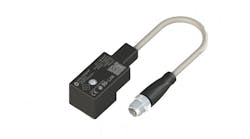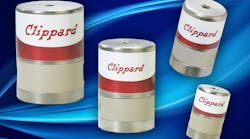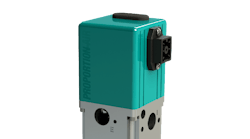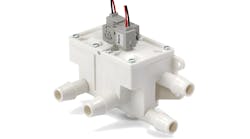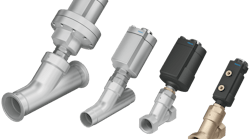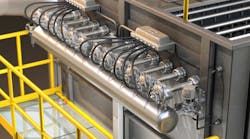When selecting an electropneumatic pressure control valve (EPC valve), designers typically evaluate linearity, hysteresis, nominal flow, repetitive precision, dynamics, size, and costs as they relate to a specific application. As is usually the case with most engineering choices, picking the right valve means balancing the tradeoffs of various performance parameters and still meeting cost objectives. However, the higher performance provided by today's compact valves can virtually eliminate the tradeoffs, giving designers new freedom in applications.
Due to their ability to convert an electrical signal proportionally into pneumatic pressure, EPC valves are used where electrical control is required to act directly on a change of pressure or force. Specifically, the EPC valve modulates the pressure proportionally to the analog electrical input. Integrated electronics compare the nominal input value and the pressure in the output line, which is measured by a piezoresistive pressure sensor. The controller generates an output signal to control the magnetic solenoids in order to obtain the required pressure in the output line. Valves typically operate either with a 4- to 20-mA current or 0- to 10-V signal.
